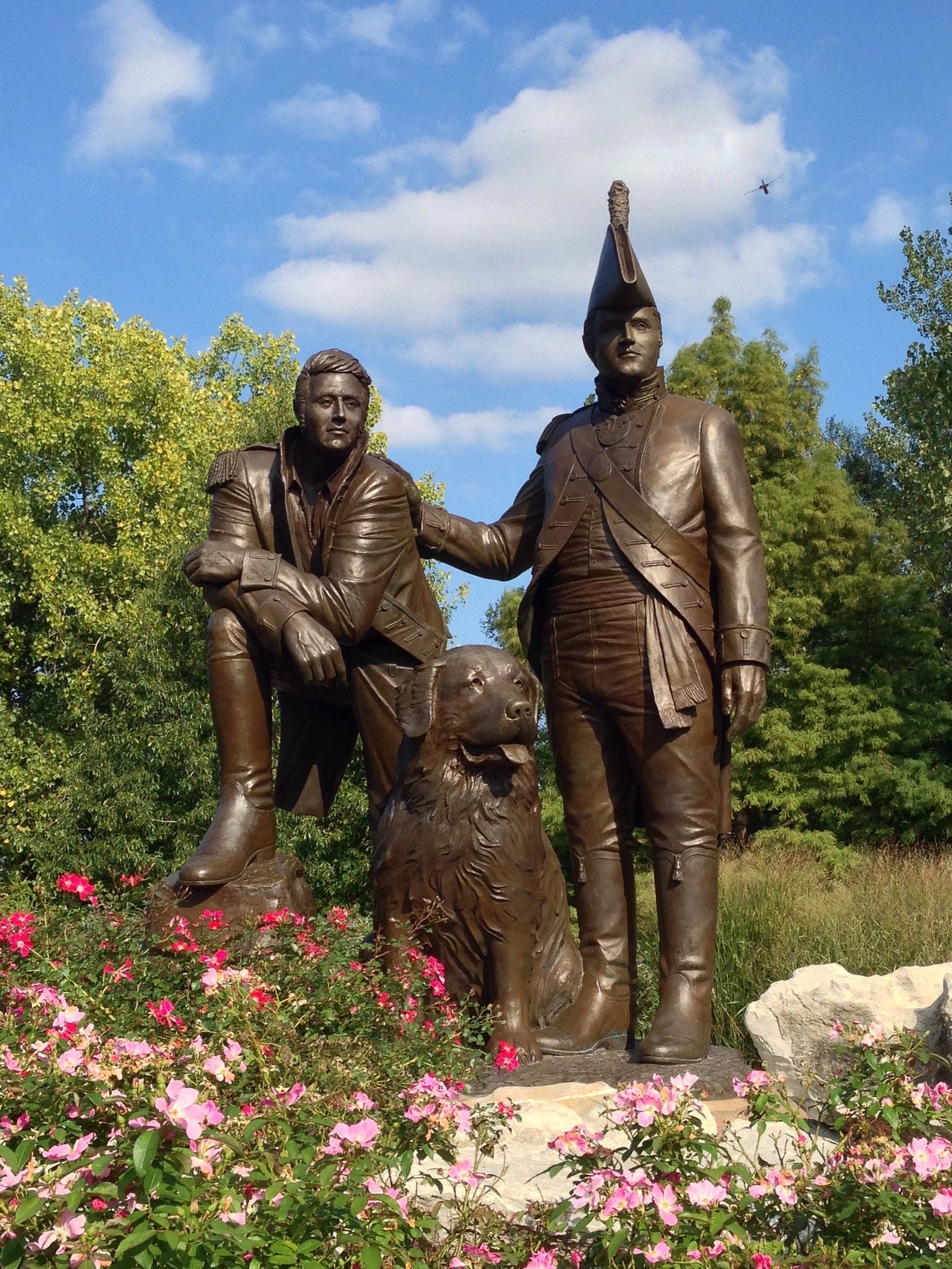Where to float through history
Paddling through America on waterways that opened the country.
Using a paddle to guide my canoe through the rapids of the Allagash River in northern Maine, I thought of those who had passed through that area of unspoiled nature before me. The Penobscot Indians gave the 65-mile waterway its name, “bark stream.”
In the 1840s, settlers built dams to facilitate the shipping of logs to coastal Maine. Not long after, Henry David Thoreau canoed to the river source and wrote about the excursion.
Whether paddling a canoe or kayak, boarding a passenger boat, or traversing a body of water another way, history often comes along. In addition to enjoying the journey itself, stories of the past enhance the experience and add to the pleasure.
History water trips await around the United States
From the length of the Mississippi River to Minnesota, from creeks to bayous, opportunities await those interested in combining a water trip with a history lesson.
The mighty Mississippi conjures up a variety of historical tidbits. An excellent way to immerse yourself in them is to board one of American Cruise Lines’ vessels that ply the Mississippi-Ohio river system. Some of them are paddleboats, which add to the authentic atmosphere. Itineraries include exploring Vicksburg and other Civil War battlefields, the historic Mississippi Delta, and history-rich towns.
Minnesota alone, where the Mississippi rises, passes sites with a rich past. Fort Snelling, a fortification completed in 1825, overlooks the confluence of the Mississippi and Minnesota Rivers. Towns born in the 1870s in the Brainerd Lakes area were clustered where a railroad crossed the Mississippi and picked up logs for local lumber mills.
Lewis and Clark and Native Americans followed these rivers.
The Missouri River is the longest in the country, running 2,341 miles from Montana before entering the Mississippi River. Several Native American groups populated its watershed. Lewis and Clark floated on it during their westward exploration. It became one of the main routes for westward expansion during the 19th century. Petroglyphs at some Native American tribal sites serve as reminders that they were there.
Other river runs provide very different but no less enticing experiences. Native Americans also populated sites along the James River, which flows through Virginia from the Appalachian Mountains to the Chesapeake Bay. Jamestown and Williamsburg (Virginia's first Colonial capitals) lie along the James River.
In the 18th and 19th centuries, flat-bottomed pole boats transported flour, tobacco, and coal to the Eastern Seaboard. At one time, some 1,500 bateaumen operated 500 boats. Their journey is recreated each June during the James River Batteau Festival.
Canals add the story.
In addition to history-rich rivers, other bodies of water also bring to life chapters of the past. The Augusta Canal in Georgia is the only one in continuous use in the South. It was built in 1845 to serve as a source of water, power, and transportation.
Textile and other manufacturing were attracted to the region by the canal, and during the Civil War, Locals built a gunpowder factory beside it. History and other tours are offered aboard an early canal boat replica.
Business people constructed an even older and more famous canal between 1828 and 1850. The Chesapeake and Ohio Canal stretches 184.5 miles from Washington, DC, west to Cumberland, Maryland. It operated until 1924 when it became the victim of damaging floods and the fact that railroads began to transport goods at lower rates.
The canal brought coal from the Alleghany Mountains to Washington, DC. Other cargoes that moved over it included lumber, limestone, and meat. Typical toll rates in 1851 included up to two cents a ton per mile for slaughtered hogs, bacon, and other meats. The canal operators charged one cent per ton for salt.
Reproduction canal boats offer rides from spring to fall. Seven visitor centers along the way have exhibits that tell the canal's history.
Stories of bourbon and a bayou
Bourbon and a bayou also offer intriguing waterborne floats that relate stories remaining from the past. Kentucky is known for its bourbon, and traces of that beverage’s earliest heritage lie along Elkhorn Creek and the Kentucky River near Lexington.
On the state’s most popular paddling stream, those who take to the water pass the abandoned James M. Stone Distillery. It was the largest of its kind during the late 1900s. Old bridge abutments that once carried trains of a now-defunct railroad peek above the water. And settlers established the historic community of Forks of the Elkhorn in 1784.
The story of a former Supreme Court Justice is among those told about the Bayou Lafourche in Louisiana. Along its 106-mile-long route, the bayou, whose name comes from French for “the fork,” changes from open stream to marsh to wetland.
Rangers on boat tours that leave from the Wetlands Acadian Cultural Center in Thibodaux discuss the Chitimacha Indians, the first European settlers in the area, and the rise of the sugar industry. Passengers disembark to tour the E.D. White Historic Site, home of the first Justice of the nation’s High Court from Louisiana, on which he served from 1894 to 1821.
Whatever your interest in the past, from Native American petroglyphs to a gunpowder factory, Henry David Thoreau to a Supreme Court Justice, there are inviting ways to get a history lesson from the water. The experience can combine a bit of learning with a lot of fun.
Victor Block
Victor Block retains the travel bug after gallivanting throughout the United States and to more than 75 other countries worldwide and writing about what he sees, does, and learns. He firmly believes that travel is the best possible education and claims he still has a lot to learn. He loves to explore new destinations and cultures, and his stories about them have won several writing awards.







